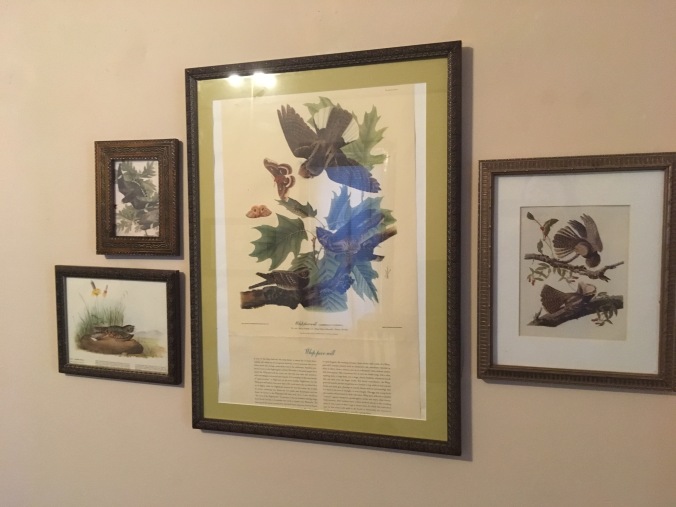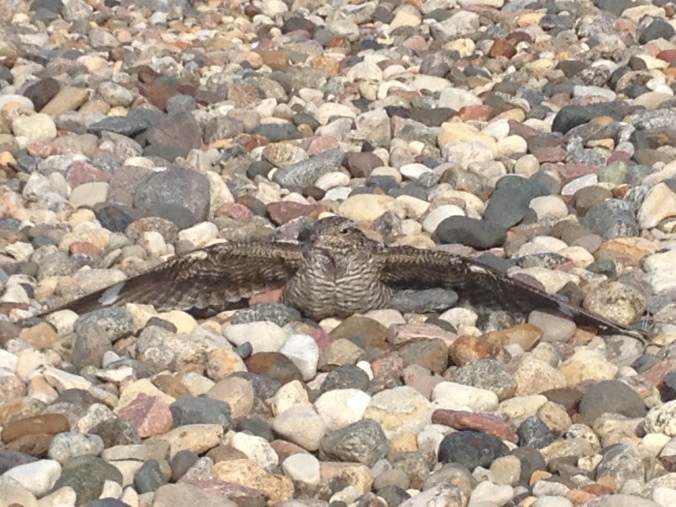
My collection of North American nightjar Audubon prints: Common Nighthawk, Common Poorwill, Eastern Whip-poor-will, Chuck-will’s-widow. Sadly, I don’t think Audubon described the other North American nightjars as separate species: Antillean Nighthawk, Lesser Nighthawk, Common Pauraque, Buff-collared Nightjar, and Mexican Whip-poor-will.
My Canadian nighthawk buddies turned me on to this blog post about the convoluted and fascinating history of describing North American nightjars by two ornithology luminaries, John James Audubon and Alexander Wilson. I love the detail about the everyday people who had been farming their land and living with Whip-poor-wills and Nighthawks. They must have been scratching their heads at the machinations of these two founders of North American ornithology.
It reminds me of a joke. Four guys are on a plane: A priest, a nuclear physicist, a college student and the pilot. The pilot announces that the plane is going to crash, and that there are only three parachutes, grabs one and jumps out the door. The physicist stands up and announces that he is on the verge of a break-through with his research that will change the world, and anyway he’s the smartest man in the world and he must survive. So, he grabs a parachute and jumps out of the door. The priest turns to the college student and says, look son, I don’t have a family, you have a full life ahead of you, and I think you should take the last parachute. The college student says, I wouldn’t worry about that, father. The smartest man in the world just jumped out the door with my backpack.
Substitute a 19th Century ornithologist for the physicist and the farmer for the college student, and there you have it.
Anyway, this is a great story about what it took to describe two elusive species. Pardon me for stealing their post title, but it is awesome.







